(单词翻译:单击)
Although it is hard to tell how cats feel, as a matter of fact, their tails tell you how they feel. This page summarizes 14 patterns with illustrations and comments, such as "Make a tail" and "Wave a tail to left and right." Once you know these patterns, it will help you when you live with a cat.
辨别喵星人的情绪可不是件容易的事,可事实上,它们的尾巴就可以告诉你它们的情绪。这篇文章总结了喵星人14种摇尾巴的方式,还有配图和说明,比如“摇下尾巴”,“尾巴左右摇摆”。了解这些方式,你可以更好地与猫相处。
14 Patterns of Cats' Tail Movements
一起来看看这14种摇尾方式吧
1. Put their tail straight up in the air.
第一种:垂直式摇尾
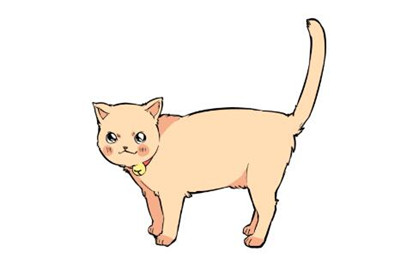
They show this sign when they feel good at a safe place or happy. Also, they raise their tail to show themselves off. They are masters of their territories. It is as if they are saying, "I'm nice, ain't I?"
当喵星人有安全感或感到快乐时,就会把尾巴竖起来。它们也用这种方式来炫耀自己是领地的主人,就好像在说:“我不错吧,是不是?”
2. Stand hairs on end
第二种:炸毛式摇尾
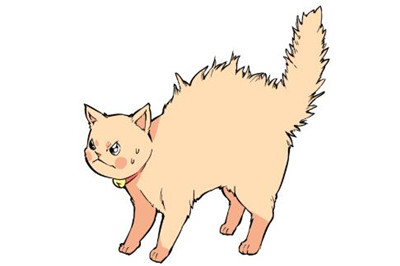
They do this sign when they stand are apprehensive or aggressive . They do this to intimidate an opponent or prey, or when they feel fear. They make themselves look bigger by standing their hairs on end. Their size is important to help avoid conflict. Sometimes the cause is fear, but most of the time, they do this for attacking.
当它们感到焦虑、害怕或打算进攻时,就会浑身炸毛摇尾。这样做是为了恐吓敌人或猎物。把毛都炸起来体型看上去会更大,因为体型大有助于避免冲突。有的时候炸毛式摇尾是因为害怕,但大多数时候是为了进攻。
3. Make their tail into a mountain shape
第三种:小山式摇尾
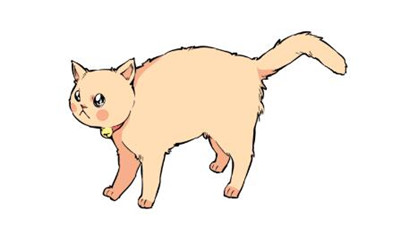
They do this when they are in tension or before fighting. When there is an opportunity, they make pattern 2 and 3 in combination, which means fighting. The sign means “Do not come any closer.”
处在紧张之中或打架之前,它们都会把尾巴来回伸缩成小山状。如果有机会,它们还会把第二种方式和第三种方式组合起来用,这就是打架的前兆,好像在说“敢再靠近一点儿试试!”
4. Sandwich their tail between their legs
第四种:尾巴夹在双腿之间
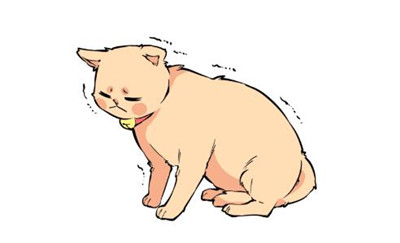
This is a sign when they feel helpless fear. Sometimes they do this pose as a sign of "submission" to an opponent, whom they cannot win against at all. In addition, they make this sign when they feel sad, or when they feel extreme anxiety when they go to a new place or an animal hospital. It is one step before a panic situation. So avoid giving them stimulus.
这个姿势表明它们恐惧又无助。有时候这种举动是向强大的敌人“投降”的方式,因为它们根本赢不了。除此之外,它们感到难过、极度焦虑(比如到一个新地方或动物医院)也会把尾巴夹在两腿之间。这种情况再向前一步便是恐慌,所以不要刺激它们。
5. Lower their tail
第五种:尾巴垂下
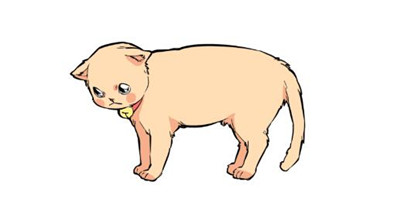
When they are disappointed because they got yelled at by their master, they are down, or they feel ill, they do this sign. You can tell their health condition with this sign.
出现这种情况有可能是因为铲屎官斥责了喵星人而让它们失望、沮丧。如果不是,那么它们很可能是生病了。从这个姿势你可以了解它们的健康状况。
6. Long tail waving
第六种:大幅度上下摇尾
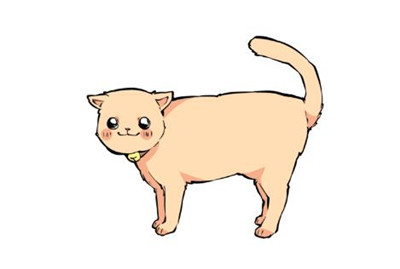
They do this sign when they find something interesting. When they feel "What's this?", they have a question, or they watch something, they often do this sign. Sometimes they wave their tails when they are relaxed or when they are not thinking anything.
它们发现好玩的事情就会大幅度上下摇尾。它们对“这是什么?”感到好奇,或者在观察什么东西的时候,就常常做出这种举动。有时候它们感到放松或什么也不想的时候也会摇尾巴。
7. Short tail wave
第七种:小幅度上下摇尾
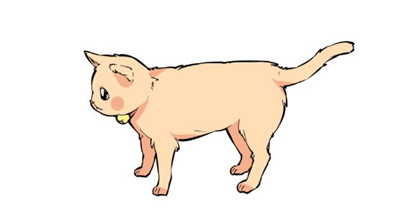
This is when they are annoyed or feel bad. It can also show they are restless. It is like people shaking their leg.
它们很烦闷或心情不好时就会小幅度上下摇尾,也可以表明它们焦躁不安,就像人抖腿一样。
8. Swing their tail from left to right
第八种:雨刮器般摇尾
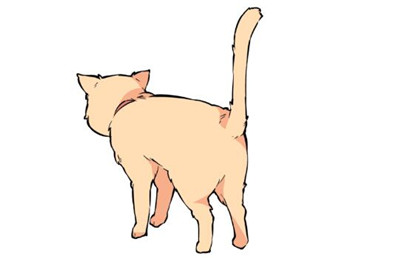
It shows confidence. They show their strength by walking majestically and swinging their tail from left to right. It is also a sign that they are within their territory.
这是自信的表现。一边威严地走路一边左右来回摆动尾巴可以显示自己的力量,也表明它们在自己的领地上。
9. Shake a tail rapidly
第九种:灵蛇般疯狂摇尾
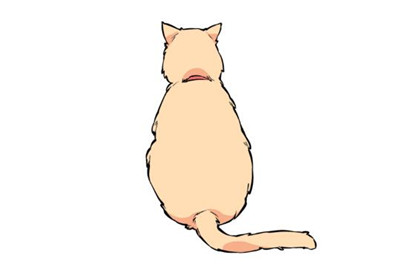
They do this when they are frustrated or are mad. They feel bad so it's better to leave them alone. Be careful of an outburst: they may suddenly bite or scratch you.
感到挫败或生气,它们就会快速摇动尾巴。所以在这个时候最好不要招惹它们。还要小心它们突然爆发,咬你或抓伤你。
10. Wave their tail in rhythm
第十种:有节奏地摇尾
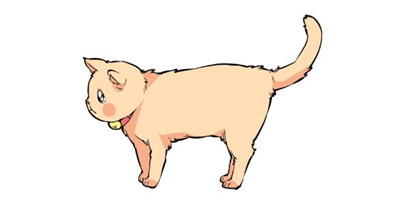
They do this sign when they are concentrated in order to catch their prey. They also do this when they are thinking something or pondering.
当它们全神贯注等待猎物或是思考什么事的时候,尾巴就会摇得很有韵律。
11. Wave their tail slowly side by side while sitting
第十一种:坐立式摇尾
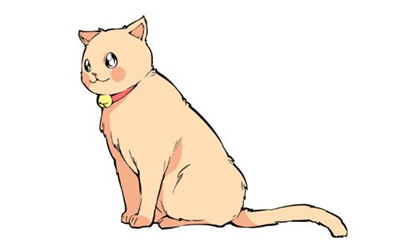
They do this when they are thinking what they should do. They also wave a tail like this when they cradle kittens.
当它们犹豫不决该怎样做的时候,就会坐下来,尾巴慢慢从一边摇到另一边。它们在哺养小猫期间也会这样。
12. Wave the tip of their tail while laying down
第十二种:睡着摇尾
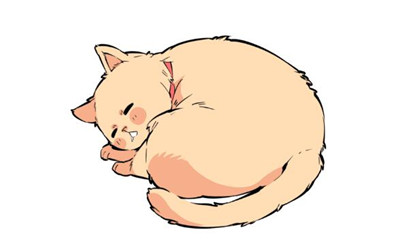
They reply to you only with a tail because it is troublesome to wake up. It is like an amiable reply, like "Oh, yeah." It may also like a conditioned reflex.
如果铲屎官想要叫醒喵星人,而它们只是抬下尾巴作为回应,那是因为它们还没睡够不想起来,就像一个亲切的回应“哦,好的”,也可能只是条件反射。
13. Snuggle their tail when being held
第十三种:被抱着的时候尾巴护住腹部
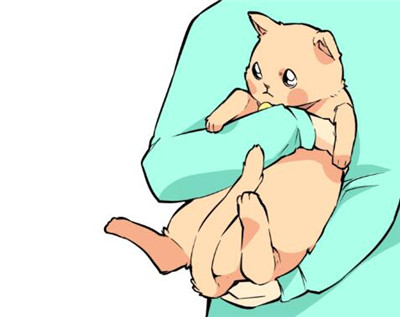
They do this when they feel fear. When animals show their belly, it means they are showing their weakest point. They "protect" themselves by hiding. On the contrary, it means they are confident if their tail is falling.
它们害怕的时候会这样做。动物露出腹部就意味着暴露出弱点。它们试图通过把腹部藏起来“保护”自己。而如果它们放下尾巴,就说明它们非常自信。
14. Shake their tail strongly when being held
第十四种:被抱着的时候疯狂摇尾
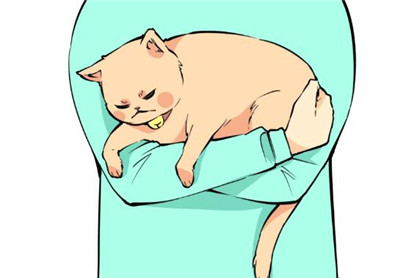
This sign shows that they don't like being held. On the contrary, it means they are confident when they wave their tail slowly.
这个姿势表明它们不喜欢被抱着。但如果它们很自信,就只是轻轻摇尾巴。


